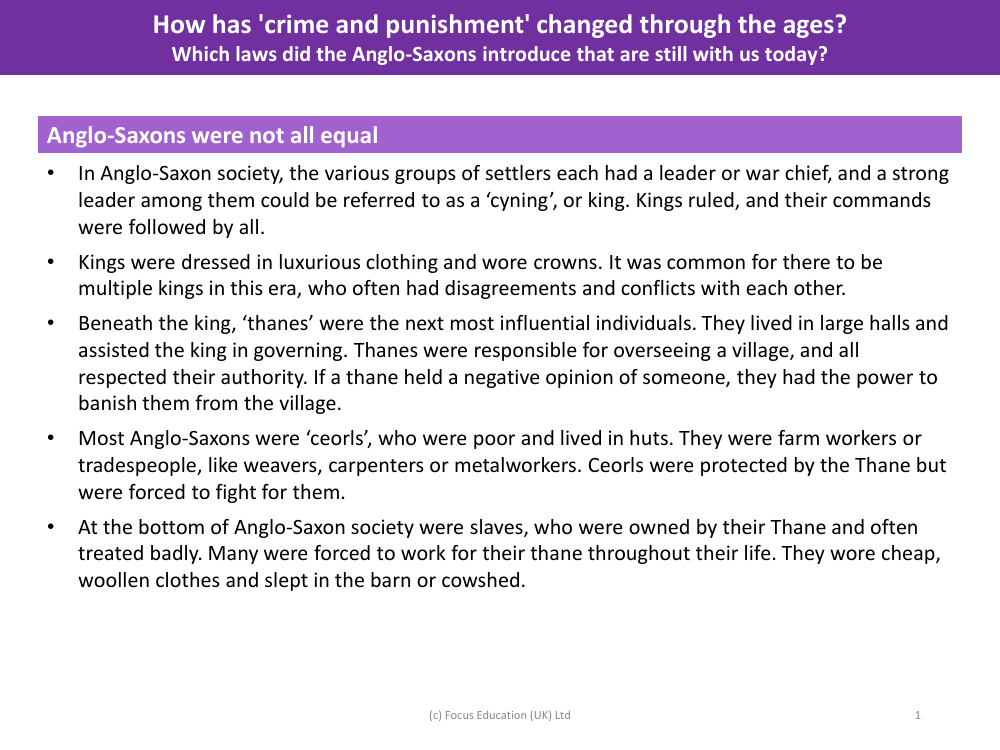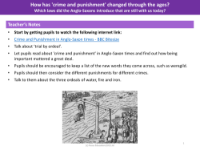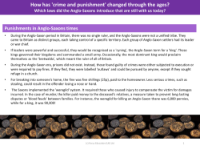Anglo-Saxons were not all equals - Crime and Punishment - Year 5

History Resource Description
During the Anglo-Saxon period in history, society was structured in a hierarchical manner, with clear distinctions between social classes. At the pinnacle of this hierarchy was the 'cyning', or king, who held supreme authority over the land and its people. Kings were easily distinguishable by their opulent attire and crowns, symbolising their status and power. It was not uncommon for several kings to reign simultaneously, leading to inevitable disputes and skirmishes over territories and influence. The king's word was law, and his rule was absolute within his domain.
Directly beneath the king in the social order were the 'thanes', who were the nobility of the time. Thanes enjoyed the privilege of residing in grand halls and played a crucial role in governance, acting as the king's regional representatives. They held sway over local villages, commanding respect and obedience from the inhabitants. A thane's disfavour could result in someone being exiled from the community. The majority of the population were 'ceorls', the commoners, who lived modestly in simple huts and primarily worked the land or practised trades such as weaving, carpentry, or metalworking. Although they were under the protection of their thane, ceorls were also obligated to fight in battles on their behalf. At the very base of the social ladder were the slaves, who endured harsh treatment and lived in poor conditions, often spending their entire lives in servitude to their thane. These slaves were clothed in basic wool and typically slept in barns or cowsheds, starkly contrasting the lives of those above them in the social hierarchy.





